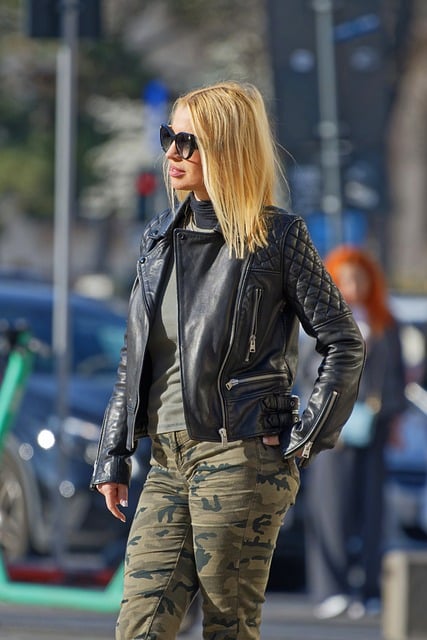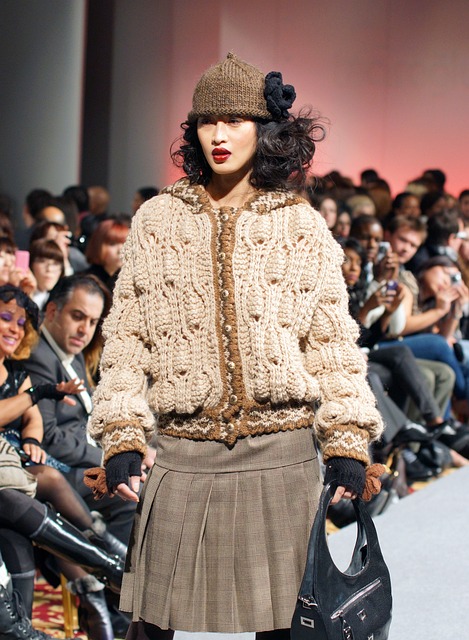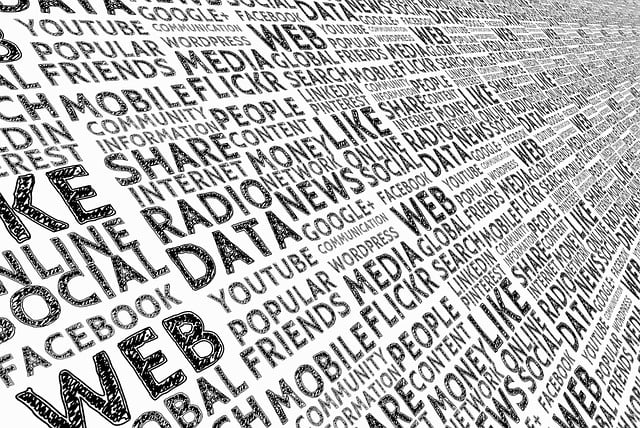fashion
Fashion: A Comprehensive Exploration
Introduction
Fashion, an art form that expresses creativity while transforming garments into cultural symbols, is a powerful global phenomenon. It transcends mere clothing, becoming a canvas for self-expression, social interaction, and artistic innovation. This article aims to unravel the multifaceted world of fashion, exploring its historical roots, global impact, economic significance, technological integrations, regulatory frameworks, challenges, and future trajectory. Through an in-depth analysis, we will delve into how fashion shapes our lives, influences society, and continues to evolve in a dynamic world.
Understanding Fashion: A Definition and Its Components
Fashion, at its core, is the art of dressing and adorning oneself or others for various purposes. It encompasses not just clothing but also accessories, footwear, jewelry, and body modifications. This expansive definition allows us to recognize fashion as a cultural, social, and artistic phenomenon. The key components that define fashion include:
- Clothing: Garments designed for wear, including dresses, suits, jackets, etc., which can be influenced by cultural traditions, personal style, or societal trends.
- Accessories: Items that complement the wardrobe, such as bags, shoes, hats, jewelry, and scarves, adding detail and personalization to an outfit.
- Texture and Materials: The feel and composition of fabrics, from silk’s luxury to denim’s durability, contribute to the overall aesthetic and comfort of a garment.
- Color and Design: Color combinations and patterns create visual appeal, while designs can range from minimalist to intricate, reflecting artistic expression.
- Cultural Significance: Fashion often carries cultural weight, representing social status, identity, or traditions within different communities.
- Historical Context: Past trends influence the present, as fashion is a cyclical art that revives historical styles and adapts them for contemporary tastes.
Global Impact and Trends: A Diverse Spectrum
Fashion’s global impact is profound, with its reach extending across continents, each region contributing to and being influenced by this dynamic industry. Key trends shaping the fashion landscape include:
| Region | Trending Styles | Cultural Influence |
|---|---|---|
| Western World (US & Europe) | Sustainable fashion, athleisure wear, vintage-inspired pieces | Emphasis on individualism, environmental consciousness, and a blend of comfort and style |
| Asia (Japan, South Korea) | Streetwear, graphic tees, bold accessories | High-tech materials, unique cultural references, and a blend of traditional aesthetics with modern trends |
| Latin America | Bright colors, floral patterns, vibrant prints | Rich cultural heritage, celebration of diversity, and a fusion of European and indigenous influences |
| Africa (West & East) | Bold geometric patterns, rich textures, traditional fabrics | Celebration of African identity, cultural pride, and the fusion of modern trends with ancient techniques |
| Middle East | Luxurious fabrics, intricate embroidery, conservative cuts for women | Cultural modesty, opulence, and a blend of traditional attire with contemporary design |
These regional trends showcase the diverse nature of fashion, where cultural heritage meets global influences. The industry’s ability to adapt and incorporate various styles contributes to its universal appeal.
Economic Considerations: A Powerful Global Sector
The fashion industry is a colossal economic force, generating significant revenue and employment worldwide. Here are some key economic aspects:
- Global Market Size: According to Statista, the global fashion market size was valued at approximately $2.5 trillion in 2021 and is projected to grow further. This massive market includes apparel, footwear, accessories, and luxury goods.
- Top Players: Countries like China, the United States, Italy, France, and Germany are major fashion hubs, contributing significantly to global production and exports.
- Investment and Trends: Investors often target the fashion sector for its growth potential. Sustainable and ethical fashion, for instance, has gained traction, attracting investments from both traditional and new-age investors.
- Retail Dynamics: Online retail has revolutionized fashion shopping, with e-commerce platforms offering convenience and a vast array of choices. This shift has impacted traditional brick-and-mortar stores, prompting adaptations in retail strategies.
- Supply Chain: The complex global supply chain involves manufacturers, designers, distributors, and retailers, each playing a vital role in bringing fashion from concept to consumer.
Technological Advancements: Innovating Fashion’s Future
Technology plays a pivotal role in shaping the fashion industry, revolutionizing design, production, and retail experiences. Notable advancements include:
- 3D Printing: This technology enables designers to create custom, unique garments with intricate patterns, reducing waste and offering personalized styling.
- Virtual Reality (VR) and Augmented Reality (AR): VR and AR enhance the shopping experience, allowing customers to virtually try on clothes and visualize outfits in a digital space.
- Smart Fabrics: Incorporating sensors into fabrics can monitor body movements, adjust temperature, or even change color, offering functional and interactive clothing options.
- Digital Fashion Platforms: Online platforms are emerging as virtual fashion hubs, where designers showcase collections, conduct sales, and foster global connections.
- Sustainable Innovations: Technologies like recycled materials, eco-friendly dyes, and closed-loop production systems contribute to a more sustainable fashion industry.
Policy and Regulation: Governance in the Fashion Sector
The fashion industry operates within a framework of policies and regulations that govern various aspects, ensuring ethical practices, consumer protection, and intellectual property rights. Key considerations include:
- Intellectual Property Laws: These protect designs, trademarks, and copyrights, preventing counterfeiting and ensuring designers’ rights to their creations.
- Labor Regulations: Policies ensure fair wages, safe working conditions, and child labor prevention in the garment industry, particularly in developing countries.
- Environmental Standards: Many regions have implemented regulations promoting sustainable practices, such as reducing textile waste, using eco-friendly materials, and improving water usage in production.
- Trade Agreements: International trade deals impact the fashion sector by facilitating or restricting the flow of goods, affecting manufacturers and retailers.
- Consumer Protection: Laws safeguard consumers from misleading advertising, ensuring product quality, and providing remedies for defective goods or services.
Challenges and Criticisms: Navigating a Complex Sector
The fashion industry faces several challenges and criticisms that demand attention and innovative solutions. These include:
- Sustainability Concerns: The environmental impact of fast fashion and the excessive use of resources have sparked criticism, prompting calls for sustainable practices and ethical production methods.
- Ethical Labor Practices: Exploitation of workers, particularly in developing countries, is a significant issue. Ensuring fair wages, safe working conditions, and eliminating child labor remains a priority.
- Counterfeiting and Piracy: The replication of designer brands and products is a global concern, impacting original designers and leading to legal battles.
- Cultural Appropriation: Accusations of cultural appropriation arise when fashion trends or designs are borrowed without respect for their cultural significance or proper attribution.
- Body Image and Diversity: The industry’s historical focus on a singular beauty standard has been criticized for promoting unrealistic body images, prompting calls for greater diversity and inclusivity.
Case Studies: Exemplary Applications of Fashion
Successful applications of fashion in various contexts offer valuable insights into its potential. Here are a couple of case studies:
Case Study 1: Sustainable Fashion Revolution – Patagonia
Patagonia, a leading outdoor clothing brand, has pioneered sustainable fashion practices. They use recycled materials, invest in repair and reuse programs, and donate 1% of sales to environmental causes. This approach has fostered brand loyalty, positioned them as industry leaders in sustainability, and inspired other brands to adopt eco-friendly initiatives.
Case Study 2: Empowering Women through Fashion – Halima (Africa)
Halima, a Kenyan fashion brand, empowers women by creating jobs and providing economic opportunities in rural areas. They source local fabrics, incorporate traditional patterns, and offer fair wages to artisans. This initiative promotes cultural heritage, fosters community development, and contributes to the global movement for ethical fashion practices.
Future Prospects: Emerging Trends and Strategic Considerations
Looking ahead, the fashion industry is poised for further transformation, driven by emerging trends and technological advancements. Potential growth areas include:
- Sustainable and Ethical Fashion: The demand for sustainable clothing will continue to rise, pushing brands to adopt eco-friendly materials, transparent supply chains, and ethical production practices.
- Personalized and Customization: Customers increasingly seek personalized fashion experiences, leading to tailored designs, 3D printing, and AR/VR technologies enhancing the customizability of garments.
- Digital Fashion and NFTs: The metaverse and non-fungible tokens (NFTs) may revolutionize digital fashion, offering unique virtual clothing experiences and ownership rights in a blockchain-based economy.
- Health-Conscious Clothing: Wearable technology will integrate with fashion, creating smart garments that monitor health metrics, offer protection, or enhance sports performance.
- Global Collaboration: Fashion’s future may see increased global collaborations, fostering cultural exchange and diverse design influences.
Conclusion: The Ever-Evolving World of Fashion
Fashion is a dynamic art form that continues to captivate and inspire across borders. From its historical roots to its global impact and economic significance, the industry has evolved while retaining its core purpose—self-expression through clothing. Technological advancements, regulatory frameworks, and societal shifts challenge and shape fashion, pushing it towards sustainability, inclusivity, and innovation.
As we look ahead, the future of fashion promises exciting possibilities. Sustainable practices will likely gain prominence, and technology will play a pivotal role in transforming how we interact with fashion. The industry’s ability to adapt, embrace change, and address its challenges will be key to its continued success and relevance. Fashion, in its ever-evolving form, remains an essential aspect of our lives, reflecting cultural diversity, personal style, and societal trends.
FAQ: Addressing Common Concerns about Fashion
Q1: What is the impact of fast fashion on the environment?
A: Fast fashion contributes to environmental degradation through excessive resource usage, textile waste generation, and carbon emissions from production and transportation. It promotes a disposable culture, leading to significant ecological consequences.
Q2: How can I be more ethical in my fashion choices?
A: Opt for sustainable brands that prioritize fair wages, safe working conditions, and eco-friendly materials. Support local designers, buy second-hand, or choose vintage pieces. Educate yourself about supply chains and make informed decisions to support ethical practices.
Q3: What is the role of social media in fashion trends?
A: Social media plays a significant role in trendsetting by showcasing diverse styles from around the world. Influencers and fashion bloggers influence consumer preferences, while platforms like Instagram and TikTok provide visual inspiration, driving rapid adoption of new trends.
Q4: How can technology improve the fashion industry?
A: Technology enhances fashion through 3D printing, VR/AR shopping experiences, smart fabrics, and digital platforms for design and retail. These innovations improve customer engagement, personalize experiences, and optimize production processes.
Q5: Why is diversity important in fashion?
A: Diversity in fashion represents the global community, promoting inclusivity and ensuring that various body types, ethnicities, and cultural backgrounds are represented. It challenges stereotypes, fosters creativity, and allows for a richer, more reflective industry.













